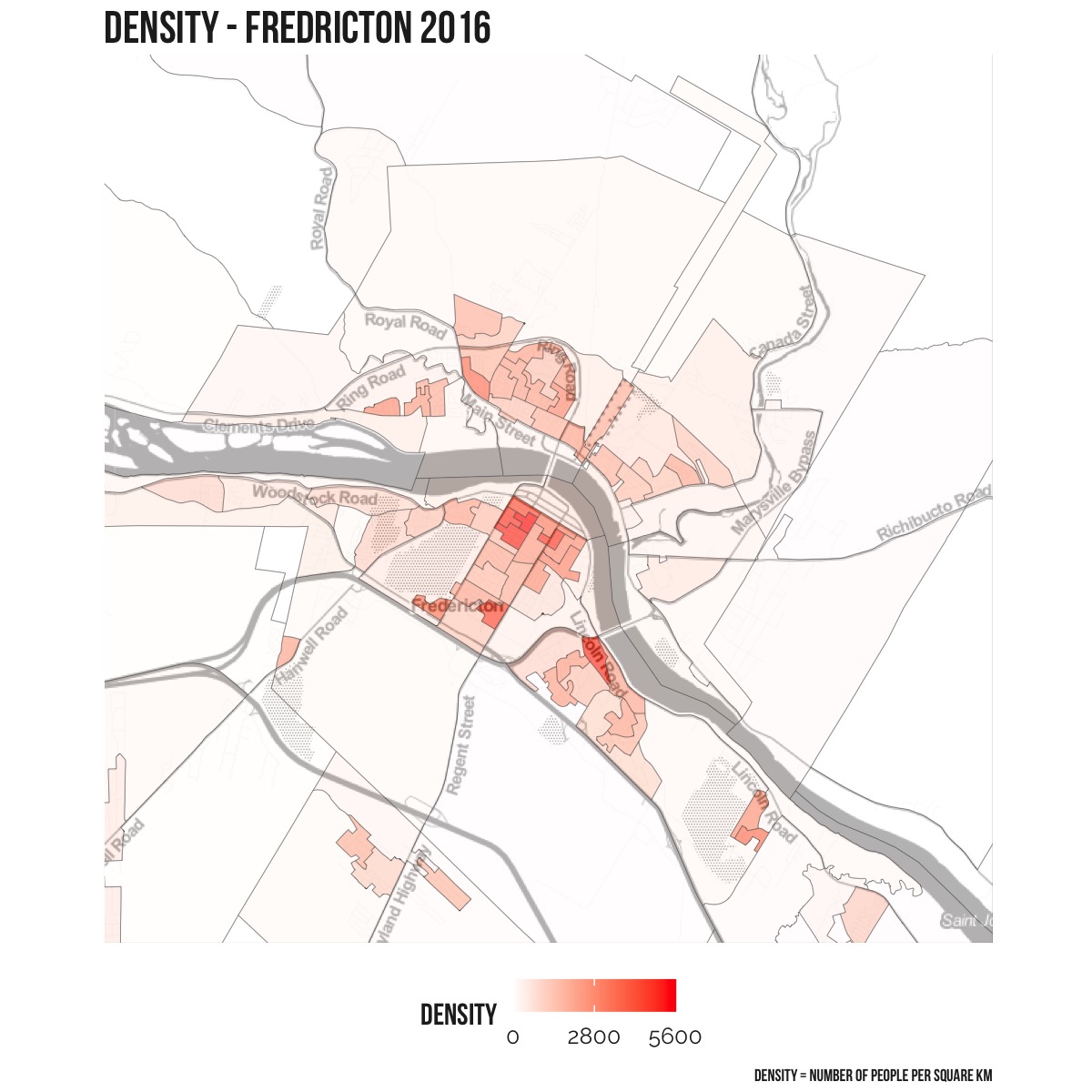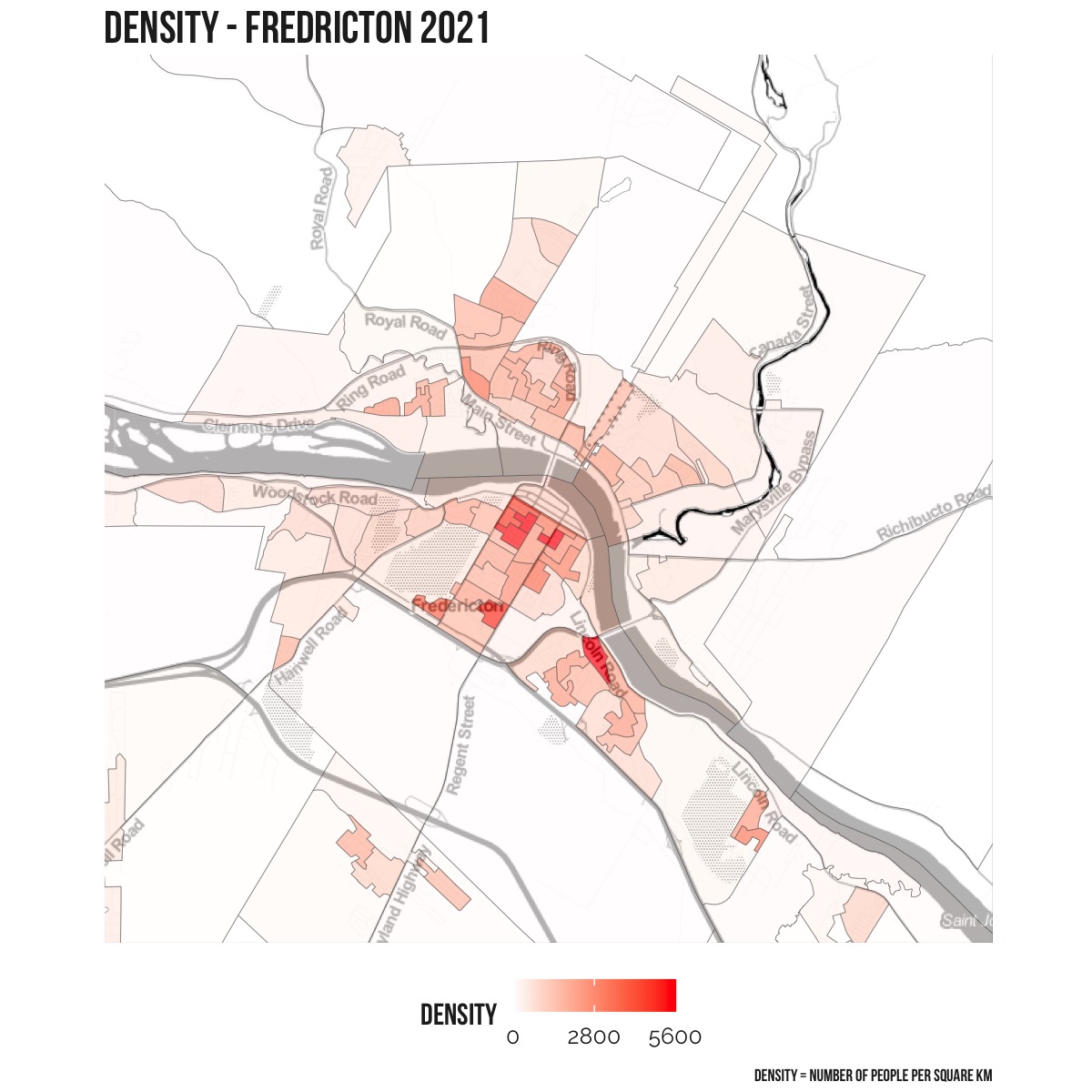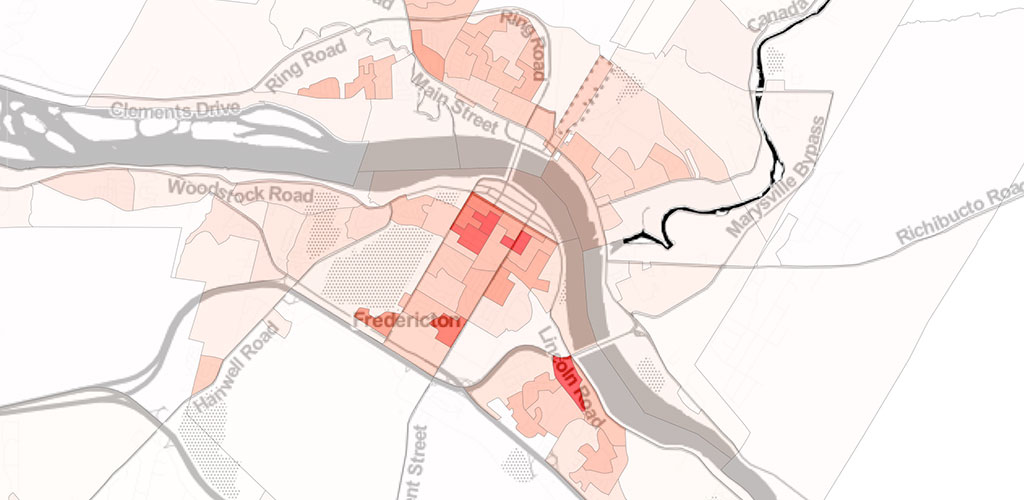
The 2021 census has been released and that means it is time to dive right into some population trends. The Atlantic provinces in general have seen a substantial amount of growth from 2016 to 2021 and this post will go into more detail about New Brunswick. You can also read more about the population changes in Nova Scotia.
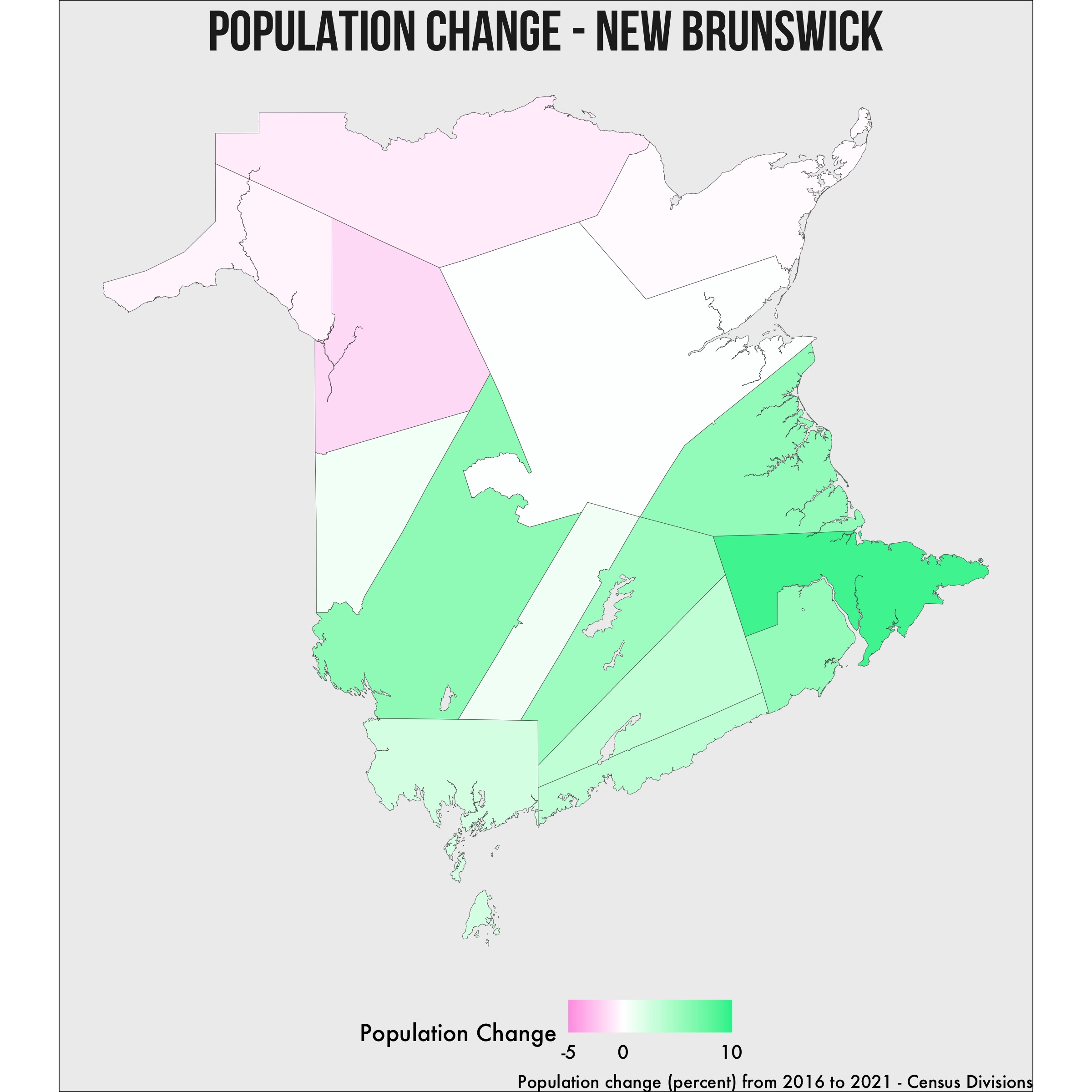
There are 15 different census divisions in New Brunswick, and between 2016 and 2021, 11 of those divisions saw population growth. The census division with the highest amount of growth during that time was Westmorland seeing an increase of 13,963 from 149,623 in 2016 to 163,576 in 2021.
| Region | Population 2016 | Population 2021 | Population Difference | Population Difference Percent |
| Westmorland | 149,623 | 163,576 | 13,953 | 9.33 |
| York | 99,453 | 105,261 | 5,808 | 5.84 |
| Kent | 30,475 | 32,169 | 1,694 | 5.56 |
| Albert | 29,158 | 30,749 | 1,591 | 5.46 |
| Queens | 10,472 | 10,998 | 526 | 5.02 |
| Saint John | 74,020 | 76,558 | 2,538 | 3.43 |
| Kings | 68,941 | 71,184 | 2,243 | 3.25 |
| Charlotte | 25,428 | 26,015 | 587 | 2.31 |
| Sunbury | 27,644 | 27,864 | 220 | 0.80 |
| Carleton | 26,178 | 26,360 | 182 | 0.70 |
| Northumberland | 44,952 | 45,005 | 53 | 0.12 |
| Gloucester | 78,444 | 78,256 | -188 | -0.24 |
| Madawaska | 32,741 | 32,603 | -138 | -0.42 |
| Restigouche | 30,955 | 30,700 | -255 | -0.82 |
| Victoria | 18,617 | 18,312 | -305 | -1.64 |
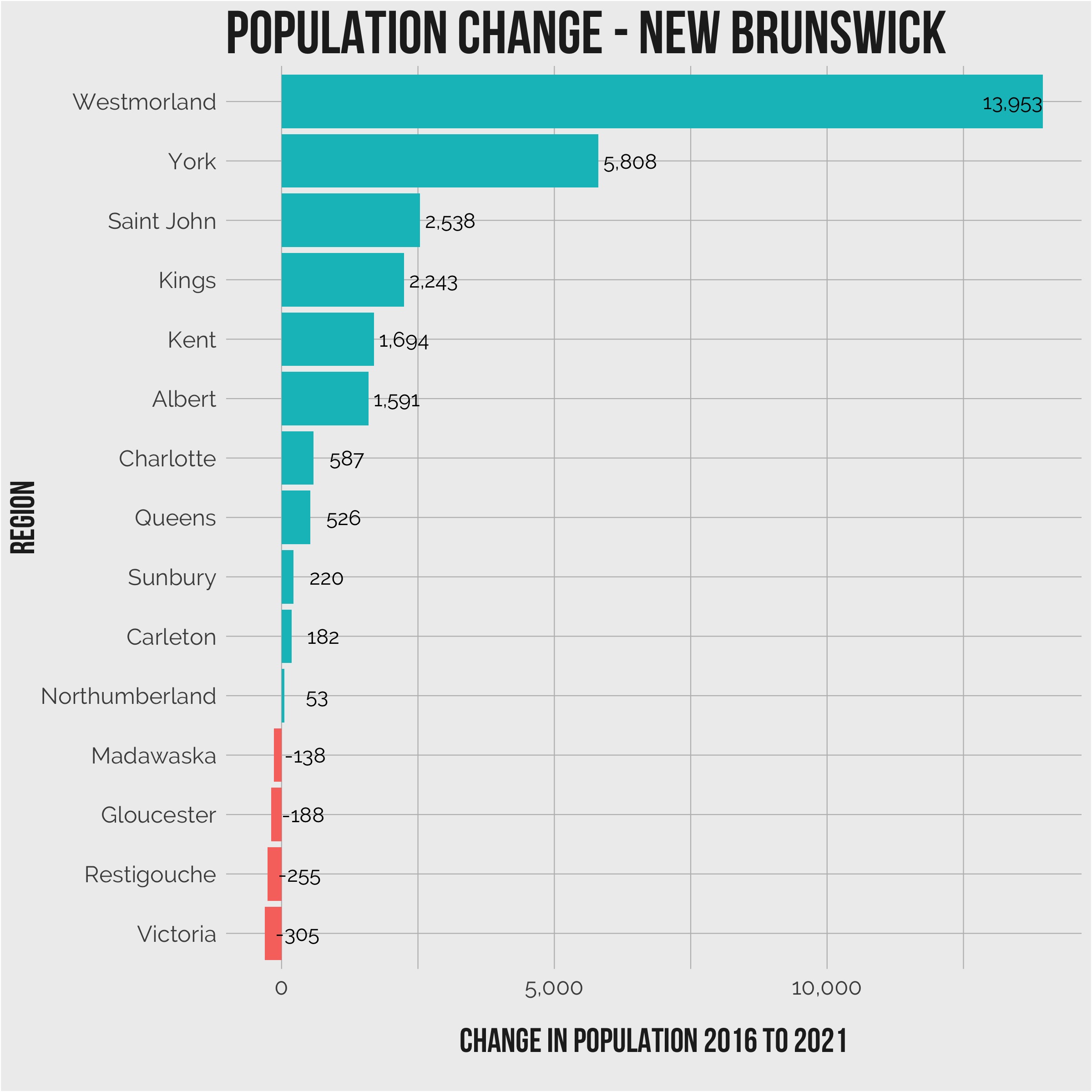
Which areas have seen high growth?
The census division with the highest population growth was Westmorland. Census division are quite large and cover the entire province. The next level down to consider is the census sub-division, then break that down into the respective dissemination areas.
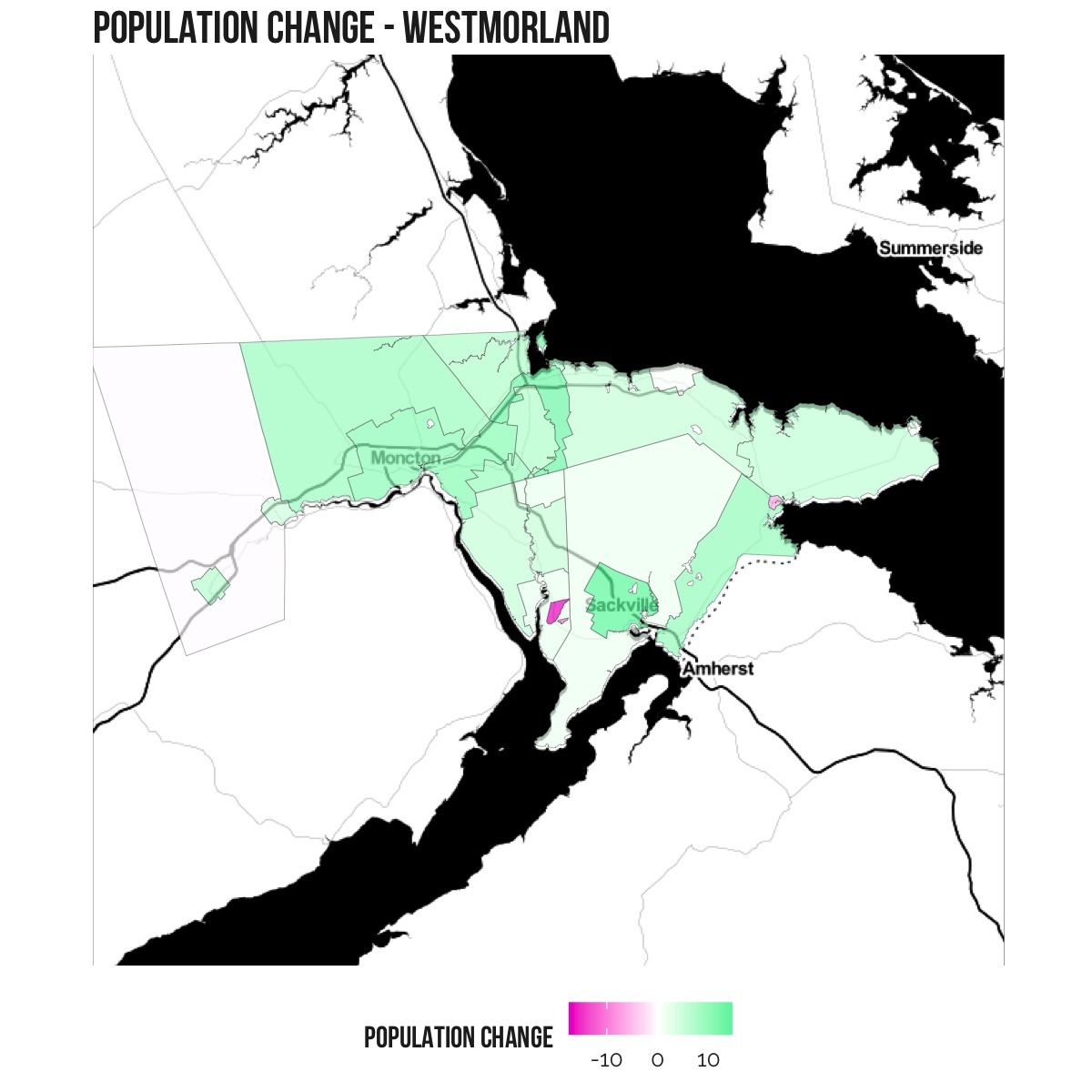
High growth area #1
The census subdivision that includes Moncton saw the most amount of growth within Westmorland. This area grew by 7,581 residents, from 71,889 in 2016 to 79,470 in 2021.
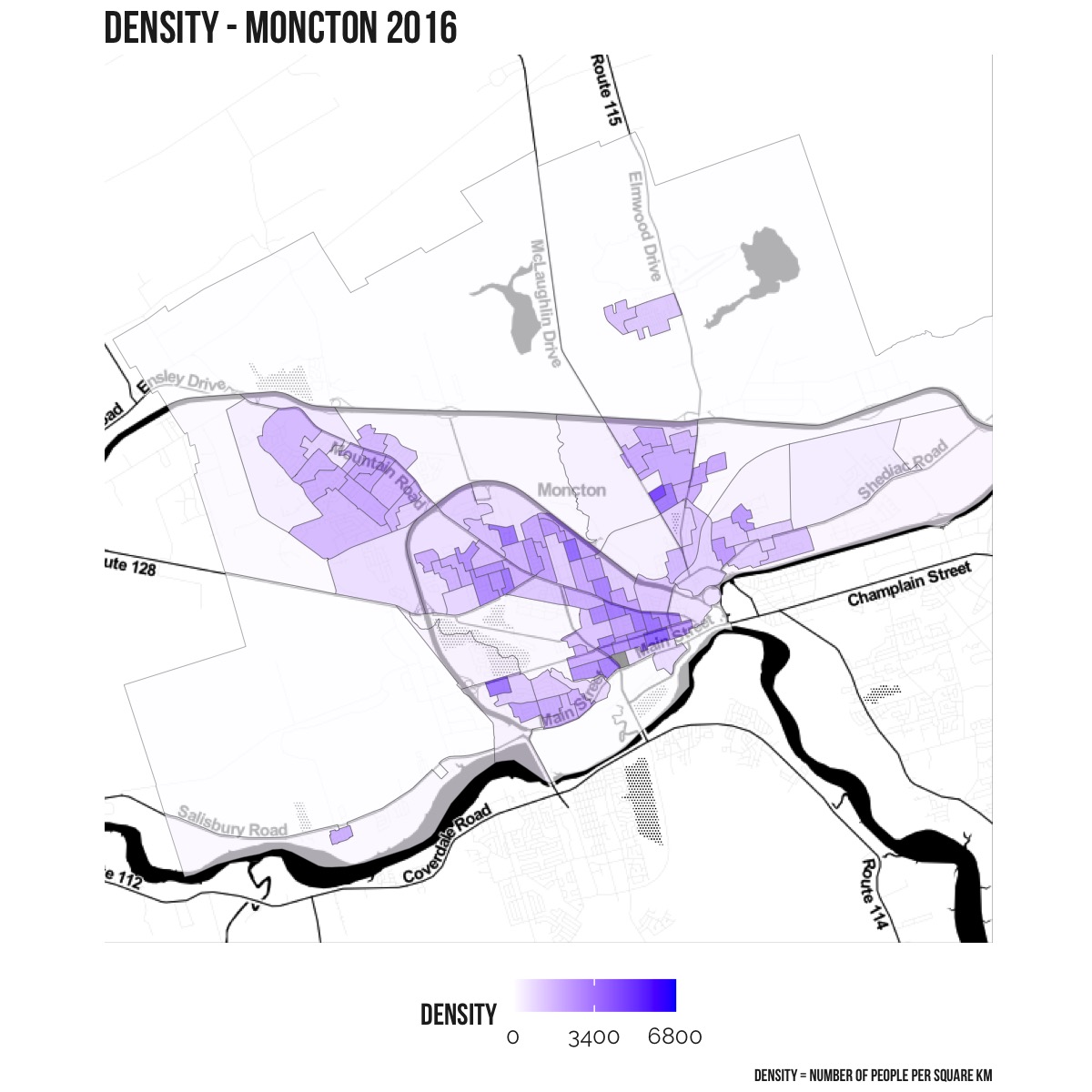
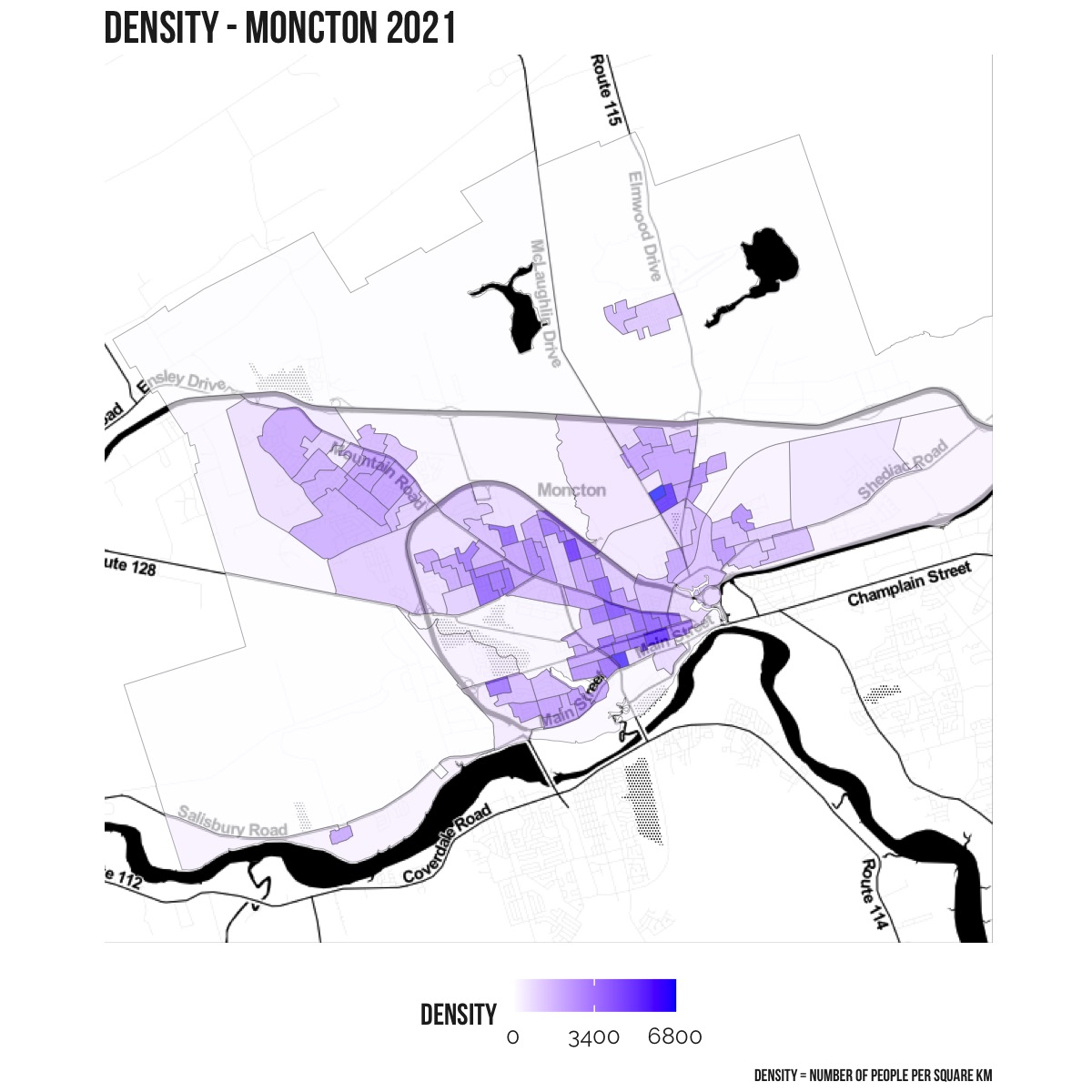
High growth area #2
The census subdivision within Westmorland that had the second highest population growth was east of Moncton. This area grew by 2,730 residents, from 25,384 in 2016 to 28,114 in 2021.
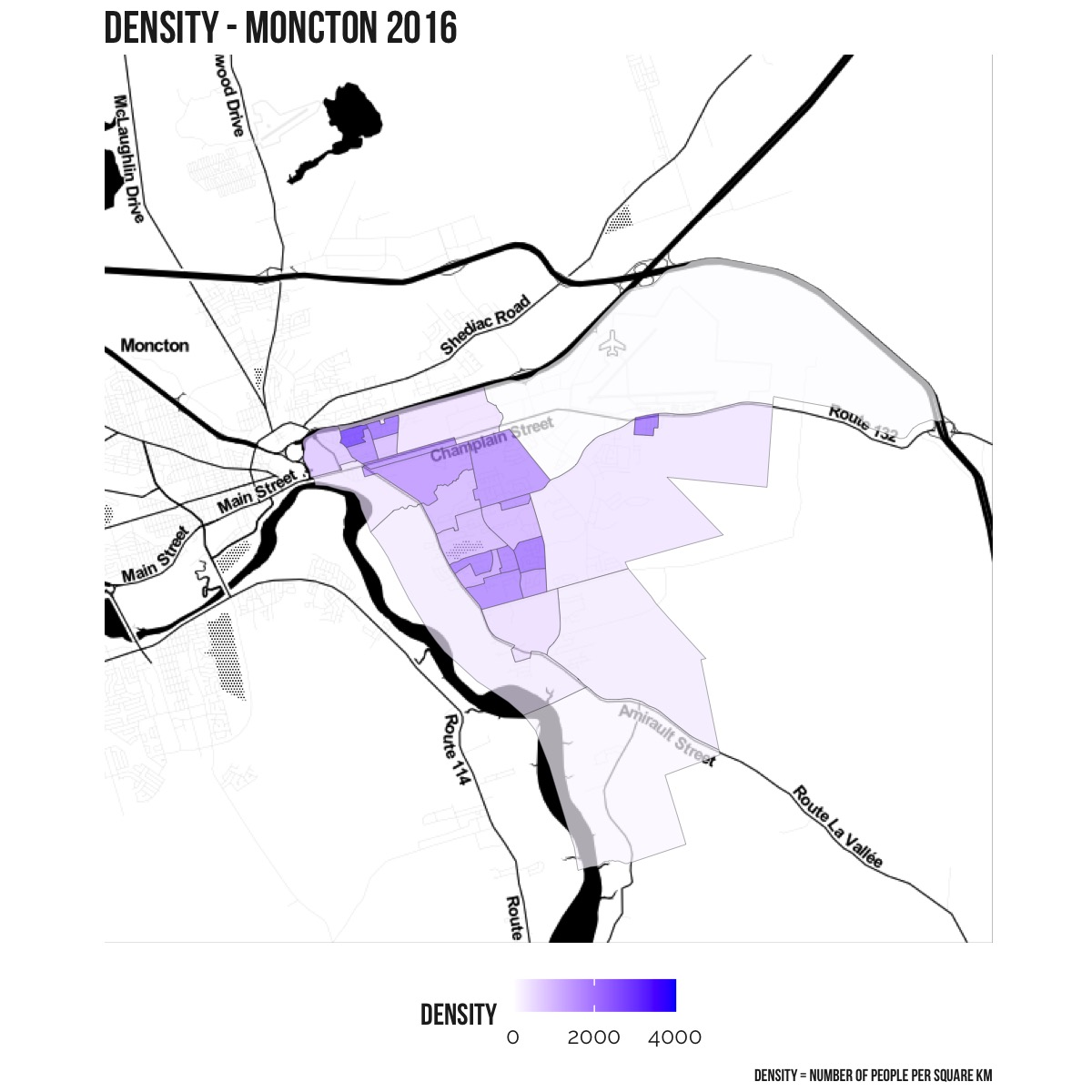
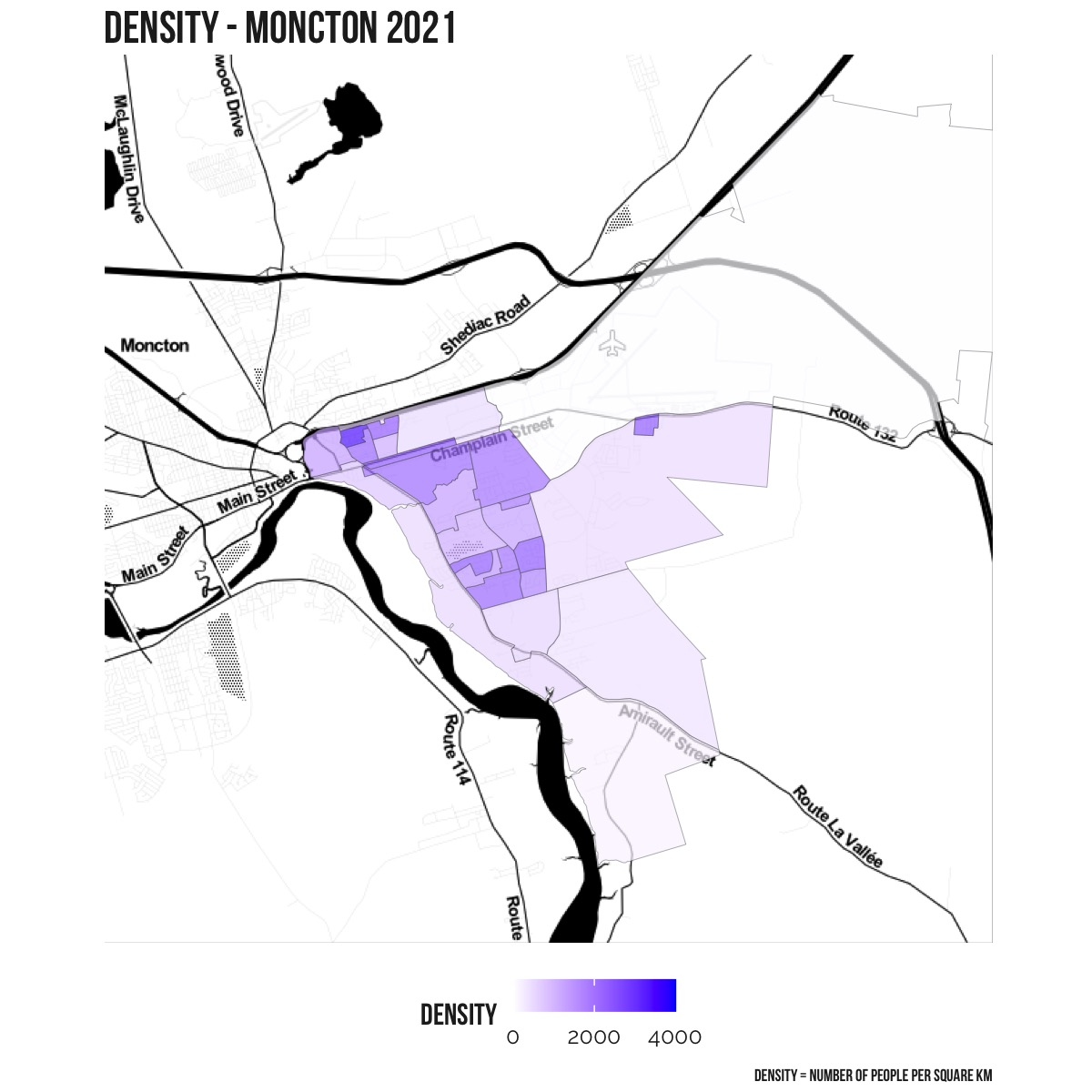
High growth area #3
The census subdivision within Westmorland that had the third highest population growth was north of Moncton. This census subdivision grew by 893 residents, from 9,811 in 2016 to 10,704 in 2021.
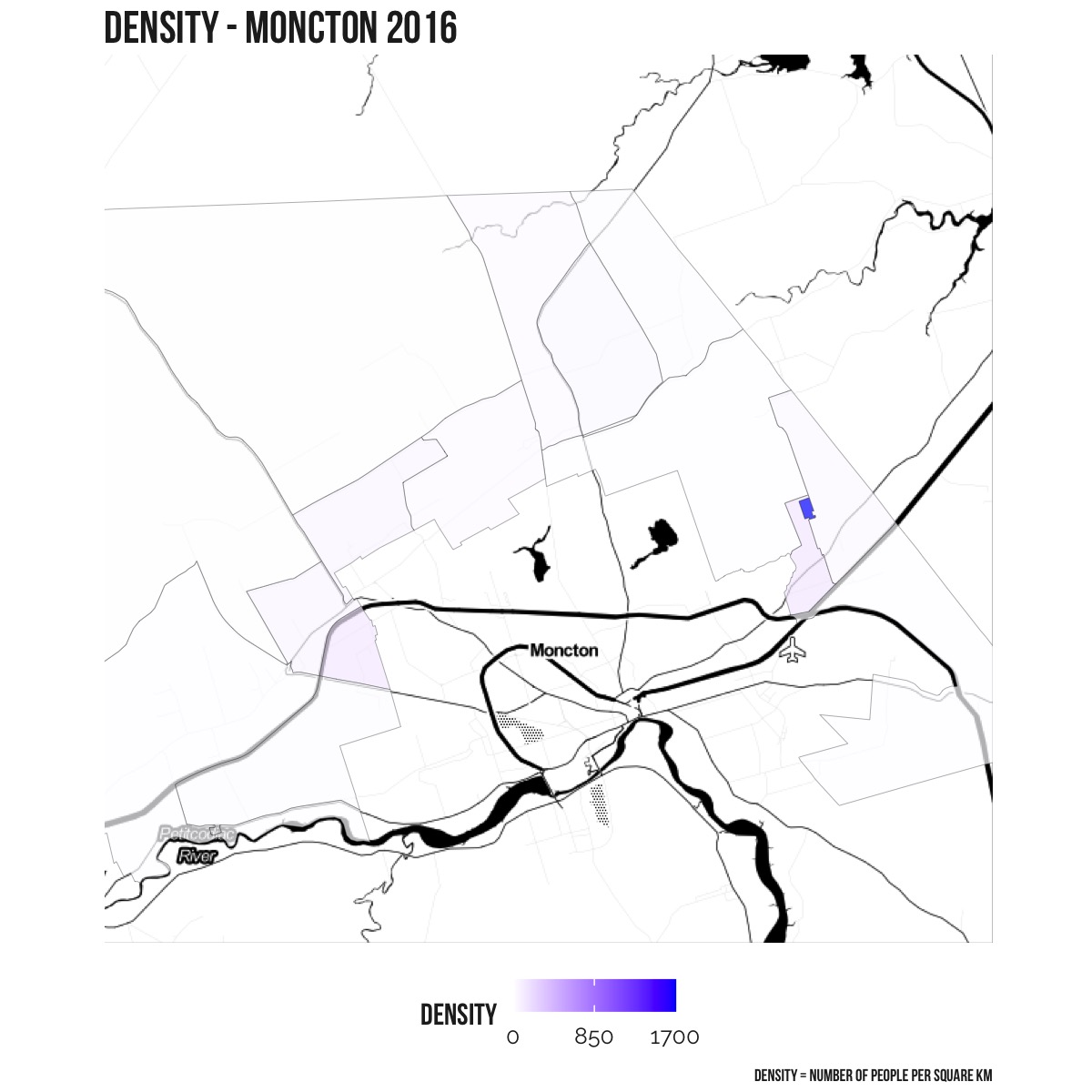
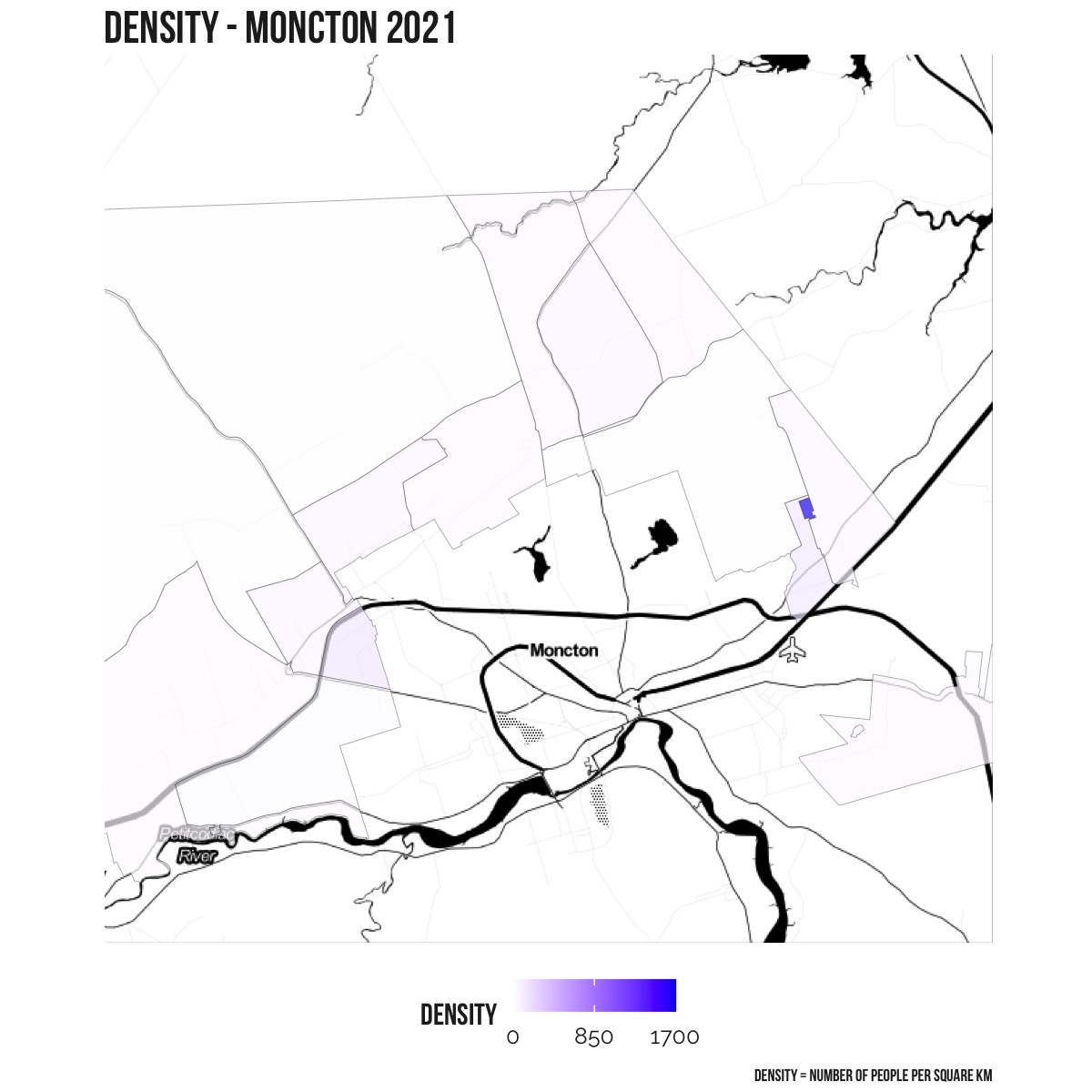
Which areas have seen the lowest growth?
The census division with the lowest population growth (or biggest population loss) was Victoria in the north east of the province. This area lost 305 residents, from 18,617 in 2016 to 18,312 in 2021.
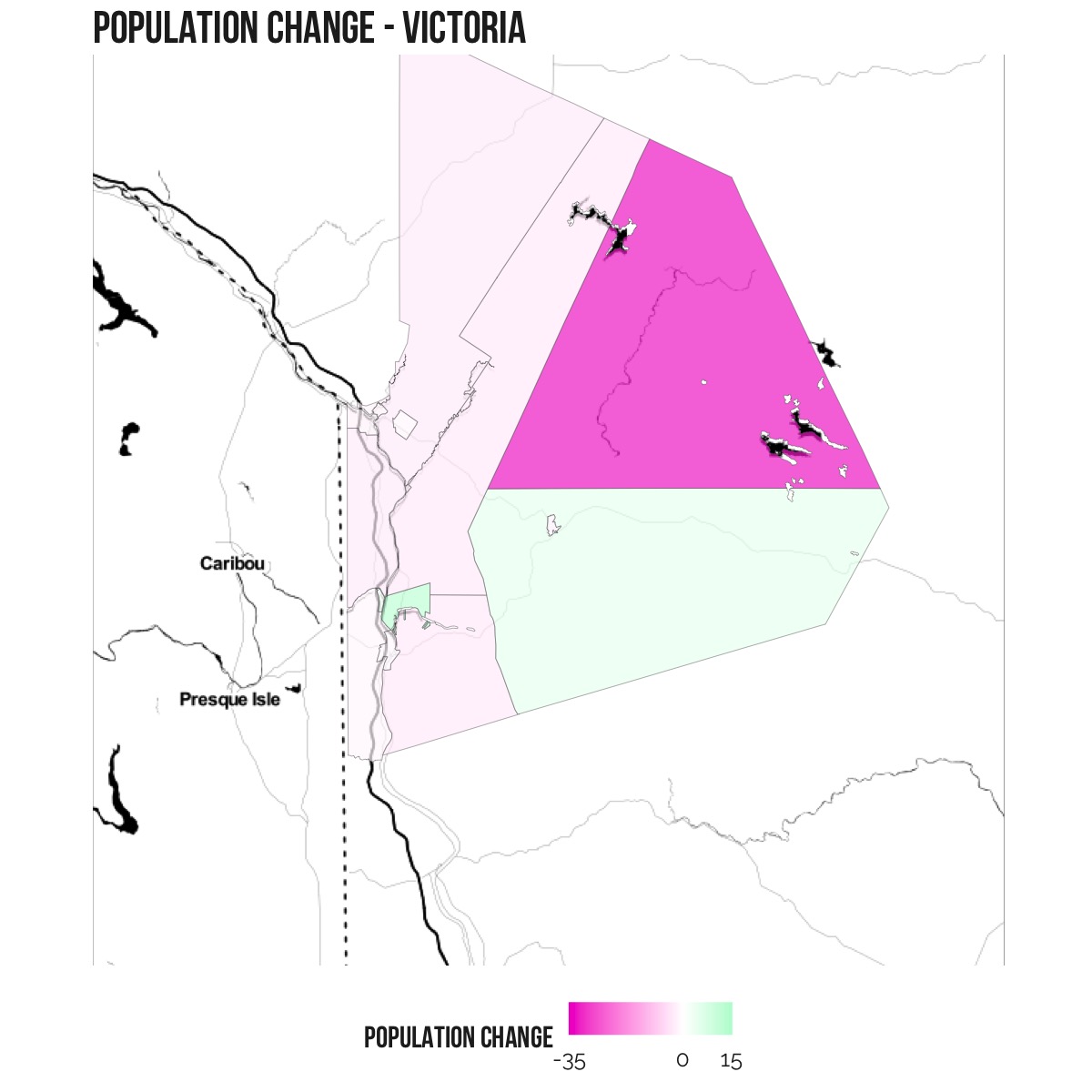
Population changes in the capital
Fredricton has grown by 6,850 residents from 101,760 in 2016 to 108,610 in 2021.
